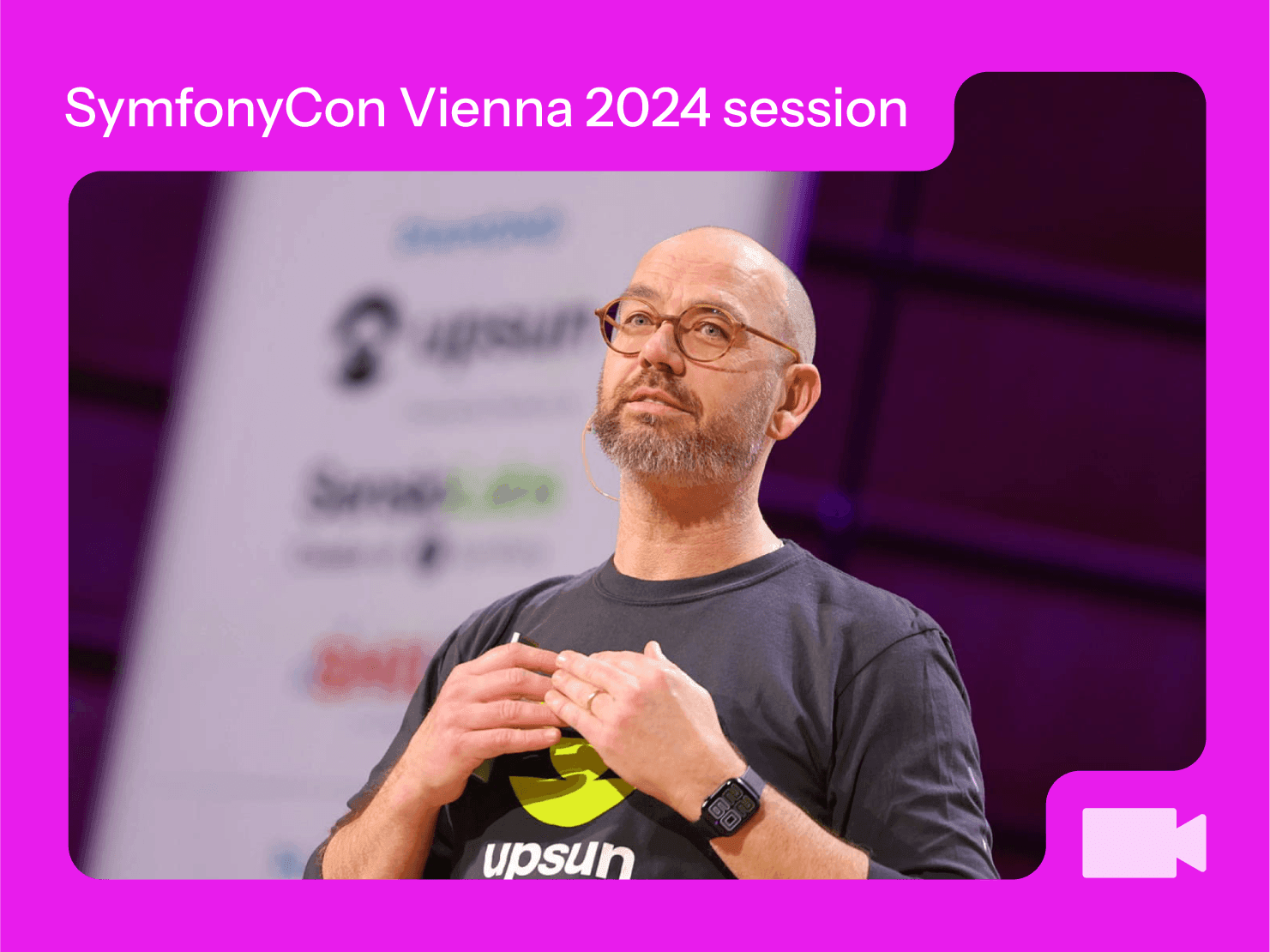
Platforms and frameworks eat culture for breakfast
DevOpsSymfonyConMCP serverplatform engineeringautomation
29 January 2025
For a quick read-through of the main takeaways, keep scrolling for our distilled write-up. We utilized ChatGPT to enhance the grammar and syntax.
Harnessing technology to transform organizational culture
In today’s rapidly evolving tech landscape, the interplay between technology and organizational culture has never been more critical. Nigel Kersten, Chief Product Officer at Upsun, delved into this dynamic at a recent SymfonyCon, highlighting how strategic technology choices can drive meaningful cultural change within organizations. Here are the key takeaways from his presentation.
A journey from DevOps to organizational culture
Nigel Kersten brings with him over 15 years of experience in DevOps and infrastructure. His background in cognitive science and philosophy of mind provided a unique perspective on the intersection of culture and technology, a central theme in the DevOps movement. Kersten’s work, including the “State of DevOps” reports, has focused on how technical practices influence organizational performance.
The crucial role of organizational culture
Kersten emphasizes that strategy alone is insufficient without a supportive organizational culture. He references Peter Drucker’s famous aphorism: “Culture eats strategy for breakfast.” This underscores the importance of aligning cultural attributes with strategic goals to ensure successful execution.
Technology as a catalyst for cultural change
One of Kersten’s standout points is the significant impact that technology choices, particularly platforms and frameworks, have on organizational culture. Unlike traditional change management, which often fails by focusing solely on one aspect of an organization, strategic technology adoption can influence multiple facets simultaneously. For example, the adoption of containers revolutionized the roles within organizations by democratizing deployment processes, shifting responsibilities from operations teams to developers.
Understanding cognitive biases in tech teams
Kersten highlights several cognitive biases that affect how teams interact and make decisions:
- Anchoring effect: Initial pieces of information disproportionately influence subsequent judgments. For instance, introducing a high initial price can make subsequent prices seem more reasonable, even if they are still high.
- IKEA effect: People value products more highly if they have contributed to their creation. This is particularly relevant in software development, where developers may resist refactoring or replacing their own code.
- Loss aversion: The psychological pain of losing something is greater than the pleasure of gaining something of equal value. This can make teams hesitant to abandon legacy systems or practices, even when better alternatives exist.
Understanding these biases can help leaders and developers make more informed decisions that foster a healthier, more collaborative work environment.
Platforms and frameworks: Building the foundation for culture
Kersten discusses how well-designed platforms and frameworks can promote a generative, high-cooperation culture. He uses Symfony as an example, highlighting its features such as dependency injection, modularity, and consistent style. These attributes make it easier for separate teams to collaborate, understand each other’s work, and maintain a high level of code quality across the organization.
Key attributes of effective platforms and frameworks:
- Modularity: Encourages separate teams to work on different components without stepping on each other’s toes.
- Consistency: Facilitates easier transitions between teams and enhances code readability.
- Opinionated methodologies: Provide clear guidelines and best practices, reducing ambiguity and fostering a unified approach.
Practical strategies for driving cultural change
Kersten offers actionable advice for both developers and leaders looking to leverage technology for cultural transformation:
For developers:
- Amplify positive technology choices: Use platforms and frameworks that encourage collaboration, testing, and continuous improvement.
- Create walking skeletons: Implement basic CI/CD pipelines early to ensure that deployment processes are ingrained from the start.
- Promote fluid team membership: Use consistent linting tools and style guides to make it easier for developers to move between teams.
For leaders:
- Monitor technology roadmaps: Align technological advancements with cultural goals to ensure cohesive progress.
- Encourage transparency and observability: Implement tools that provide visibility across the stack, fostering trust and collaboration.
- Mitigate negative impacts: Recognize when technology choices may inadvertently harm the culture and take proactive steps to address these issues.
Conclusion: Empowering change through technology
Nigel Kersten’s presentation highlights the significant influence that technology choices can have on an organization’s culture. By selecting platforms and frameworks that promote collaboration, consistency, and continuous improvement, developers and leaders can drive cultural transformations. As technology and culture become increasingly intertwined, Kersten provides a roadmap for building resilient, high-performing organizations.
Embracing the right technological tools isn’t just about enhancing productivity or streamlining processes; it’s about shaping your organization’s culture. As Kersten states, “Developers are given the power to make technology choices, and these choices can drive the change needed to create the kind of organization you want to work in.”
Useful links
Your greatest work
is just on the horizon
CompareVercel alternativeAmazee alternativeHeroku alternativePantheon alternativeManaged hosting alternativeFly.io alternativeRender alternativeAWS alternativeAcquia alternativeDigitalOcean alternative
Join our monthly newsletter
Compliant and validated
